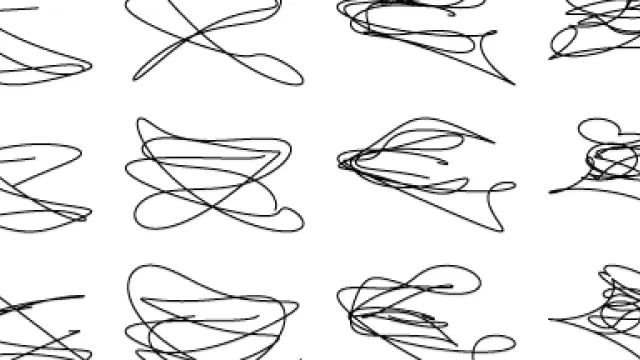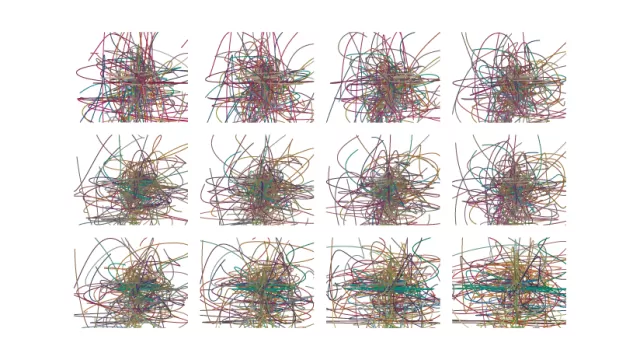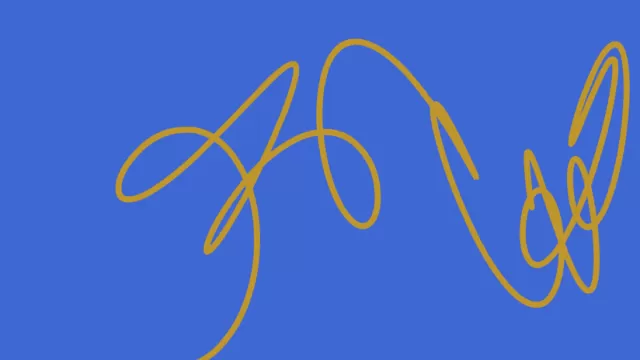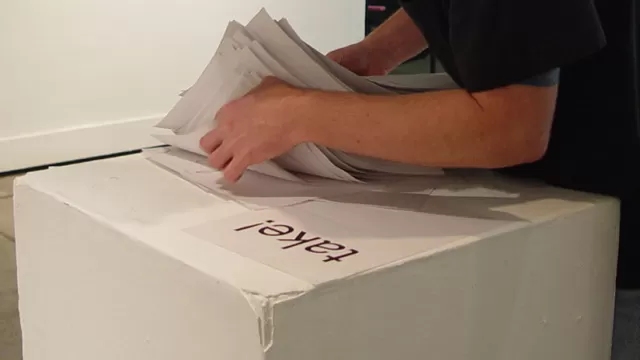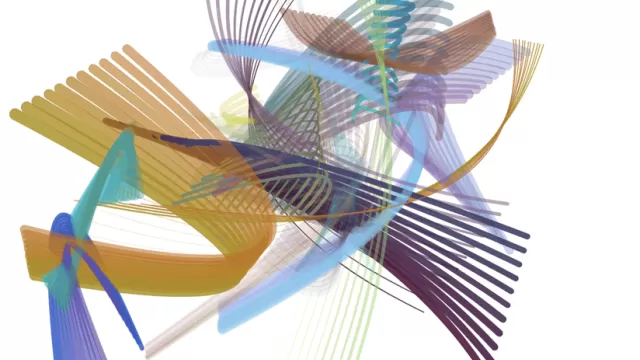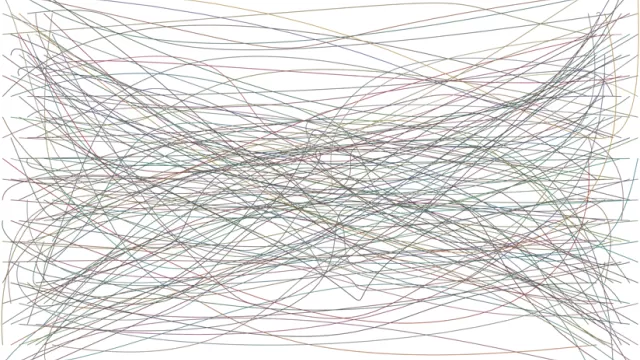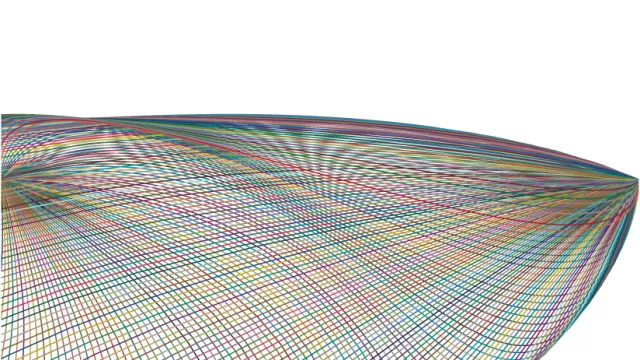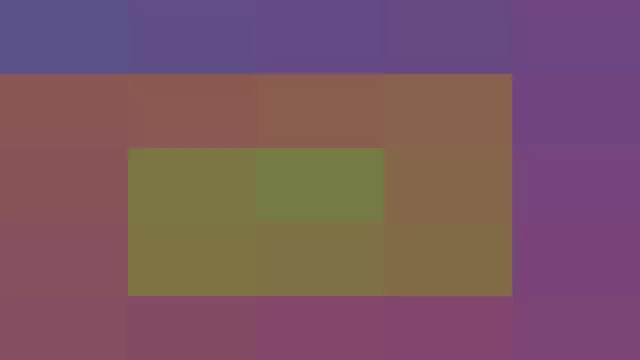Because these curves have a kind of double ontology–they exist as figures, i.e. lines with a certain shape that can be drawn on screen or printed out on paper, and as a set of parameters within a complex parametric equation, i.e. a set of constitutive numbers, not unlike genetic material, from which they can be generated–they have specific manipulable properties. One of these is the ability to measure and interpolate the distance between any pair or set of figures.
